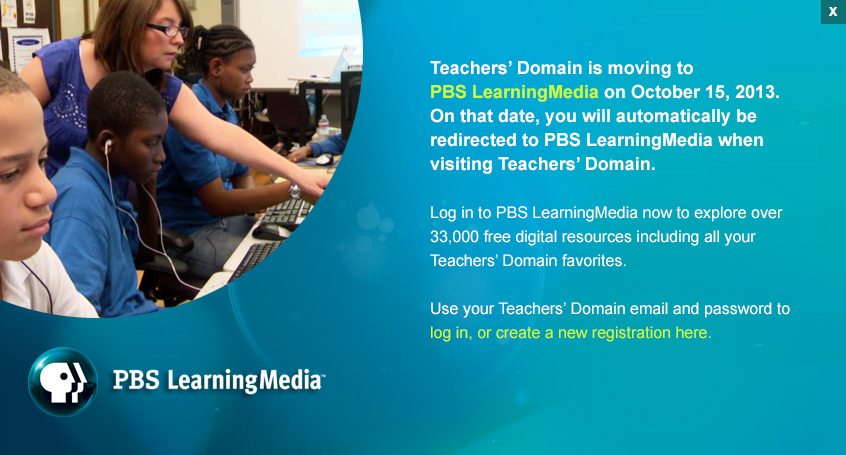Teachers' Domain - Digital Media for the Classroom and Professional Development
User: Preview
Source: American Experience: "Reconstruction"
In the years before the Civil War, state-supported public education was almost nonexistent in the South. Providing education was seen as the role of the church or the family, not the state. Those schools that did exist were mostly for white males, with some state funds offered to help poor families pay tuition. Because most white women didn't work outside the home and therefore didn't earn salaries, and African Americans were enslaved, educating women and African Americans was deemed unnecessary.
By 1835, nearly every state in the South had passed laws making it illegal to educate slaves. These laws reflected the tension between African Americans' desire to learn and white southerners' fear that a literate black population would not be content to remain enslaved. The plantation economy relied on slave labor. While 90 percent of African Americans lived in the South, the overwhelming majority enslaved, autobiographical accounts by former slaves such as Frederick Douglass make clear that enslaved people did strive to learn how to read and write.
As the Reconstruction era began, southern Republicans and northern aid societies, eager to establish black schools in the South, were surprised to find that some already existed. Although they were illegal in most states, African Americans had built, funded, and maintained almost 500 small schools across the South. The result was that by 1865, 10 percent of slaves had secretly learned to read and 5 percent had learned to write.
In the immediate aftermath of the Civil War, newly freed African Americans established additional schools in churches (known as Sabbath schools) or built new ones. In 1865, Congress established the Freedmen's Bureau, which was designed to oversee relief and education for newly freed African Americans. With the aid of the Freedmen's Bureau, schools for newly freed African Americans quickly spread through the South. School teachers -- whites and free blacks -- were supported by the American Missionary Association. By the late 1860s, public schools were established in the South. With the exception of those in South Carolina and Louisiana, however, these schools were either all-black or all-white (segregated), as many white southerners rejected "mixed" (integrated) schools.
After the Freedmen's Bureau closed in 1870, southern states took over the operation of the dual school systems. The Compromise of 1877 and the election of President Rutherford B. Hayes essentially ended Reconstruction and restored political, economic, and social power to white elites in southern states. As a new era of white supremacy was launched in the South, obtaining an education became more difficult for African Americans. White employers fired black employees for attending school. White supremacist groups like the Ku Klux Klan terrorized African Americans by burning schools, randomly beating and murdering teachers and students, and intimidating others from attending.
Despite such violence, inequalities, and setbacks that would continue for decades, the establishment of the first system of universal public education for children in the South during Reconstruction took hold, By 1880, the black literacy rate had increased from 5 percent to 30 percent, and by 1900, to 70 percent.
 Loading Standards
Loading Standards